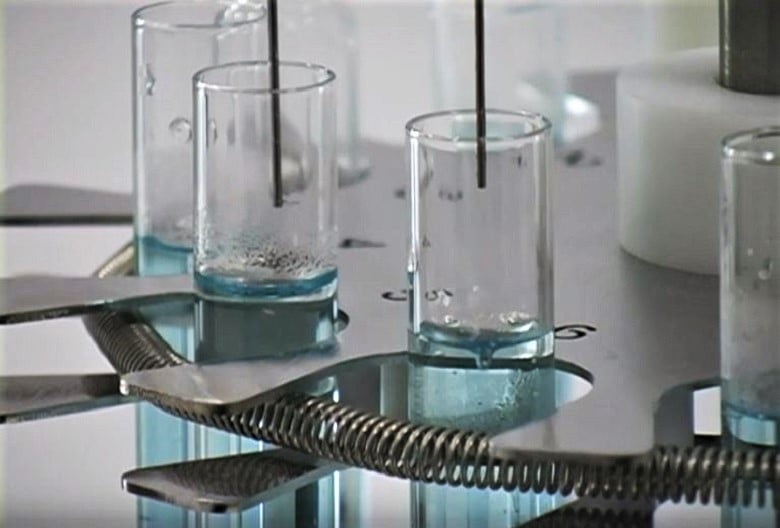
Blowdown evaporation is a common sample preparation step used by analytical laboratories to dry down or concentrate their test samples. Dry gas is continuously blown onto the sample's surface, sometimes in conjunction with heat, to speed up the evaporation of excess solvent and further concentrate the sample prior to analytical techniques such as GC-MS or HPLC. Nitrogen gas is most commonly used during blowdown evaporation as it provides the fastest evaporation rates, and is a proven safe drying media that poses minimal risk to the analysis.
Dry nitrogen is considered an inert gas, which means that it is chemically inactive. Unlike compressed air that contains oxygen and water vapor that could react with the compounds in the test sample, pure, dry nitrogen will not deteriorate the sample in any way.
High purity nitrogen is able to delay or prevent oxidation that could occur throughout the drying process. Depending on the solvents and solutes contained in the test sample, a chemical reaction could occur with a relatively small exposure to oxygen. Drying that sample down with compressed air which contains a fair amount of oxygen, will not only speed up the oxidation process, but also make your final analysis unreliable.
What's even more important than keeping the samples safe, is keeping the lab technicians safe during the entire evaporation process. Since nitrogen is a non-reactive gas, it's also non-flammable and will not increase the risk of an chemical combustion. This is especially important when working with any flammable or otherwise reactive solvents such as carbon disulfide and diethyl ether.
Not only is nitrogen gas the most reliable drying media, but it is also proven to have the fastest evaporation rate. Studies have shown that evaporation rate is dependent on the humidity of the atmosphere in which the samples are in. The more steps that can be taken to reduce the humidity, the faster the concentration rate will be. These same studies have shown that the most effective way to reduce the humidity is by purging the atmosphere with nitrogen, aka nitrogen blowdown evaporation.
Faster concentration rates lead to a reduction in contamination and degradation risks by minimizing the amount of time the samples spend in the atmosphere. The use of nitrogen gas in blowdown evaporation provides labs with the most dependable samples to analyze in the quickest amount of time. It's a win-win.
Another win is that nitrogen gas is a far more affordable alternative to other inert gasses such helium or argon. This is especially true with the use of a nitrogen generator, which can provide an endless supply of high-purity nitrogen for your laboratory. With minimal maintenance and virtually no waste, you can feel good knowing you're utilizing an eco-friendly nitrogen generation solution.
Learn the most common nitrogen generation options for laboratory use, and discover the solution that best fits your needs. For more information on nitrogen generators, check out this comprehensive guide: Nitrogen Generators: Everything You Need to Know
→ Next: How gas cylinders can disrupt gas chromatography sample preparation
